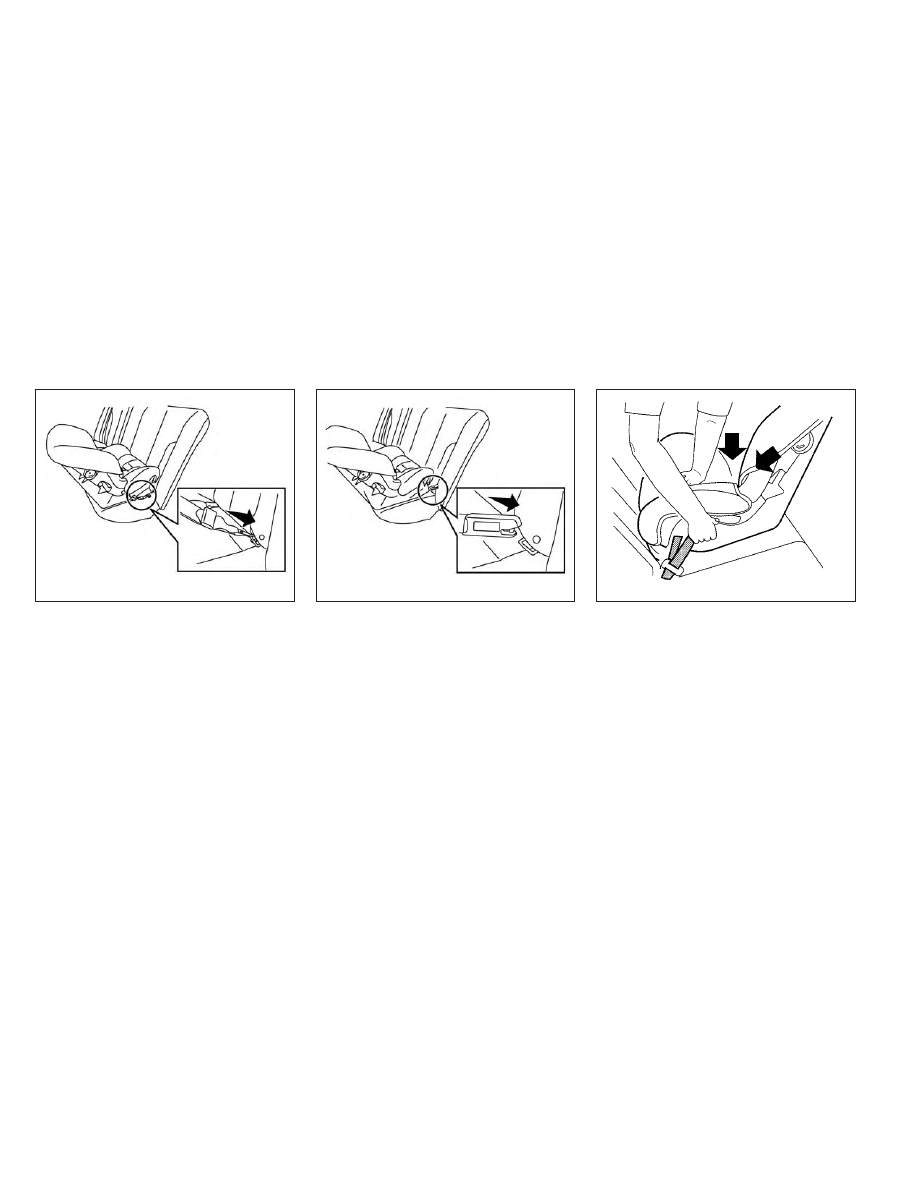Nissan Frontier (2023 year). Manual in english - page 4

4. Secure the child restraint anchor at-
tachments to the LATCH lower anchors.
Check to make sure the LATCH attach-
ment is properly attached to the lower
anchors.
5. For child restraints that are equipped
with webbing-mounted attachments,
remove any additional slack from the
anchor attachments. Press downward
and rearward firmly in the center of the
child restraint with your hand to com-
press the vehicle seat cushion and seat-
back while tightening the webbing of
the anchor attachments.
LRS2997
Rear-facing webbing-mounted – step 4
LRS2996
Rear-facing rigid-mounted – step 4
LRS0673
Rear-facing – step 5
Safety-Seats, seat belts and supplemental restraint system
1-37